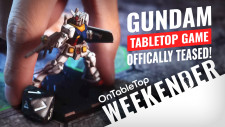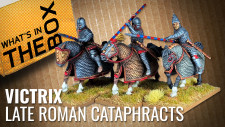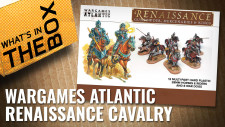
Emergency Miniature Work - 15mm USMC Super Cobra
Ops Center Episode: 75th Anniversary of Iwo Jima
February 19, 2020 marks the 75th Anniversary of the Battle of Iwo Jima
February 19, 2020 marks the 75th Anniversary of the opening of the Battle for Iwo Jima. Fought primarily between the US Marine Corps and the Imperial Japanese Army, this was one of the most ferocious battles in the Pacific Theater of World War II, and a touchstone moment in the history of the US Marine Corps.
We look at what made this battle so intense, what factors led to its conduct and outcome, and some key features you’d want to bring to an Iwo Jima-themed gaming table, no matter what kind of system, command level, or gaming medium you enjoy.
Check out the Sitrep Podcast Channel on YouTube or Twitch:
YouTube channel and Twitch.
Some people have expressed an interest in a written form of the content in this video, so below is an edited transcript of the narration in our Iwo Jima 75th Anniversary video, linked above.
INTRO
February 29, 2020 marks the 75th Anniversary of the landings on Iwo Jima island, made by the United States Marine Corps against well-prepared defenses of the Imperial Japanese Army. One of the closing battles of World War II in the Pacific, the Battle of “Bloody Iwo” was one of the most ferocious engagements in the entire war. Officially lasting 36 days, the battle would eventually claim almost 30,000 dead, and marked the first time an invader had actually set boots on Japanese home soil in hundreds of years.
In the words of Fleet Admiral Chester Nimitz, commenting on the Marines’ conduct on Iwo Jima, “uncommon valor was a common virtue.” To this day, this battle retains a near mythic status in the annals of the Marine Corps, the American armed forces, and military historians around the world.
If you want a look at just how bad the Pacific War can get, look no further than Bloody Iwo.
BACKGROUND
Iwo Jima is a tiny volcanic island in the north-central Pacific, and had been part of Japan for hundreds of years. This made it special, because just about all the other landings undertaken by the US Marine Corps and Army thus far in World War II were either considered imperial Japanese possessions, colonies, outposts, or conquests taken by Japan earlier in the war. Iwo Jima was legally, administratively, and symbolically part of the home islands – the Japanese Self Defense Force operates a small naval air station there to this very day. The American invasion of Iwo Jima thus marked a fateful milestone. Beyond the bombing, beyond submarine warfare in Japanese home waters, beyond trading far-flung islands scattered across the Pacific … American boots would now be placed on Japanese soil.
By February 1945, the war in the Asia and the Pacific was reaching an apocalyptic pitch. While it would never reach the ferocity of the war in Russia, it would approach the scale of the Allied efforts in Northwest Europe and was almost always much more savage. Since 1942, together with the Australians in the South Pacific and the British in India and Burma, the Americans had pushed Japanese Pacific conquests back along two general axes of advance, an Army-dominated drive in the South Pacific, and a Navy-dominated drive in the Central Pacific. In October 1944, those two drives had met in the Philippines. While fighting the Philippines would rage until the end of the war, by the early spring of 1945 the Americans were teeing up invasions against the last North Pacific islands that would bring them to the doorstep of Japan herself.
One of these, fatefully, was Iwo Jima. Beyond its symbolic importance as a “gateway” to Japan, the island was also almost exactly halfway between the American bombing bases in the Marianna islands and Japan. Bombing operations against Japan had been underway since these islands were taken in June 1944, but they were at the extreme range of the B-29 Superfortress. If a B-29 sustained any damage or mechanical problem in the course of its mission, making it home was almost impossible. It was also impossible to stage fighter escort for these bombers. So setting up a base at the halfway point was a natural military priority, especially as preparations started to gear up for the full-scale ground invasion of Japan.
INVASION
The invasion of Iwo Jima would be undertaken primarily by the United States Marine Corps, specifically the 3rd, 4th, and 5th Marine Divisions formed into the Fifth Amphibious Corps. In all, some 70,000 US Marines would be pitted against over 20,000 defenders of the heavily-reinforced 109th Division of the Imperial Japanese Army. Although much was unknown about Japanese defenses, one factor beyond question was the fanatical intensity of Japanese defense. There’d been savage resistance long past any point of hope, suicidal banzai charges, even Japanese civilians had committed mass suicide with their families rather than face surrender – and that was for colonies and conquests. Resistance here, on Japanese home soil, would undoubtedly be fearsome.
Even though the US Pacific Fleet was by the point one of the powerful armed services the world had ever seen, they could only do so much at once. Fighting still raged in the Philippines. Preparations were underway for the invasion of Okinawa, even deeper in Japanese home waters. Thus, shore bombardment and aerial operations against Iwo Jima were rushed and far from adequate.
In truth, the Americans could’ve bombed and shelled Iwo Jima for a year, and it’s doubtful how much effect it would have. Japanese defenses had been under construction for more than a year. All civilians had been long evacuated. Iwo Jima is a tiny island of volcanic rock, which had by now been turned into a gigantic ant-hill of tunnels, underground barracks and bunkers, ammo dumps, gun positions, machine gun nests, observation points, booby traps, and supply caches. There would be no siege, no surrender. Every square yard of Iwo Jima would have to be assaulted, taken, and held against counterattack.
The initial landings finally went in on February 19, 1945. The first Marine amtracks hit the shore just before 09:00, and right off the bat things started to go wrong. Navy UDT teams (forefathers of todays Navy SEALS) had in fact already suffered bloody setbacks here, resulting in incomplete intelligence on the landing beaches. Iwo Jima was in fact covered in … not soil … not sand … but loose black volcanic ash, which played hell with vehicles. Marines couldn’t move quickly through this sand, and they couldn’t dig fighting holes, trenches, or protected positions. The beach was also backed by a 15-foot swell of this ash, which the tanks and amtracks couldn’t cross without enormous difficulty.
Then the Japanese opened fire. Per their plan, they hadn’t opened fire right away, instead remaining hidden until the American landing beaches were positively jammed with assault waves, boats, vehicles, and support units. Then they finally cut loose a little after 10:00, the slaughter was simply horrific. Marine losses easily outstripped losses on Gold, Juno, Sword, and Utah beaches in Normandy, by the end of the first day Marine casualties had ticked past even those on Bloody Omaha’s opening day.
PUSHING INLAND
Despite the carnage on the beaches, Marine platoons, companies, and battalions soon punched across the southern neck of Iwo Jima, reaching the small island’s opposite shore later that day and sealing off the highest ground on the island, the 500-foot volcano Mount Suribachi. This mountain was the next major objective, because from its heights Japanese observers were directing pinpoint artillery, mortar, and rocket fire from all over the island. The mission fell to 28th Marine Regiment, finally cleared most of the mountain four days later.
This resulted in the most famous moment of the battle, when the 48-Star American flag was raised over the summit of Mount Suribachi by troops of E Company, 2nd Battalion 28th Marines. The photograph taken of this event is widely considered one of the most famous and reproduced photographs of all time, and is perhaps the most famous single image of World War II. Entire movies have been made about the taking of this one photograph, it has been used as the basis for the US Marine Corps Monument in Washington D.C.
Of course it was the second such flag raising we see here, the first flag was too small to be seen across the island. Also, the commander of Second of the 28th didn’t want to give up the first flag to the Secretary of the Navy, hence the quote NEED to raise a second flag to send back to Washington. While there’s also been controversy and corrections about the names of the men actually in the photo, one sobering fact remains clear. Of the six men in the photo, three of them would be dead within days because the Battle of Iwo Jima was war, far from over.
SECURING BLOODY IWO
With the beachhead secure and Japanese artillery largely blinded, the grim task of taking the rest of the island began. There were two airfields on the island that had to be taken, along with a third under construction. The 4th and 5th Marine Divisions were joined by the 3rd Marine Division as the battlefront steadily expanded. The craggy ravines into which the Japanese had dug their defenses reduced the eject of supporting naval gunfire. Ground artillery and gunfire was almost useless against the volcanic rock, caves, and tunnels. More air units were brought in for bombing, along with flame-throwing tanks. The Japanese used huge 320-mm rocket mortars, not unlike the dreaded German nebelwerfer. Twenty-seven Marines and Navy Corpsmen would be awarded the Medal of Honor, more than half of them posthumously. For the Corps, this would total almost 30% of the Medals of Honor awarded in all of World War II. Fourteen of the twenty-four Marine infantry battalion commanders engaged on Iwo Jima were killed or wounded. At least one company sustained 100% casualties – every single man in the company had been hit at least once. In all the American landing force sustained 6,821 killed and 19,217 wounded.
When the battle officially ended on March 26, Japanese losses were nearly total. Over 19,000 were dead, only 216 survived to be taken prisoner. But the US Army’s 147th Regiment, garrisoning the island after the battle, was actually rooting out small pockets of hidden resistance for another thee months, pushing the Japanese death toll to almost 21,000. In fact, the last four Japanese soldiers didn’t surrender until January 1949, almost four years after World War Two had ended.
GAMING IWO JIMA
Gaming Iwo Jima presents a tough challenge. We’re looking at incredible fortifications and resilience on the Japanese side, and incredible determination and raw firepower on the American side. Another characteristic of the battle is an absolutely insane level of troop density. Iwo Jima measures just over five miles from tip to tip, and 850 yards across its narrowest point, in all 8 square miles packed with over 100,000 troops (making it the most densely-populated point on earth at the time).
What this means in gaming terms is that you want to stick to lower-echelon levels of wargaming. Small infantry systems like Bolt Action, Valor & Victory, the “Banzai” module for Avalon Hill’s “Up Front” series, Pacific-themed modules and expansions for Advanced Squad Leader, and so on. This is “scale one” wargaming, with individual fireteams, squads, platoons, and weapons crews, primarily infantry-focused. Armor is almost none-existent … there were flamethrowing Marine Shermans on Iwo, but less than a company in a battle that again involved almost 100,000 people. So these units would be very rare on an individual gaming table.
Larger-scale support weapons are tricky. While the Americans brought tremendous naval bombardment, ground artillery, and air power to bear, these were shown to be largely ineffective against honeycombed Japanese defenses. Similarly, Japanese artillery, while fierce and inflicting the majority of Marine casualties, was also blinded by the loss of Suribachi. However, most of the island was had been pre-sited by Japanese artillery crew, somewhat offsetting this disadvantage.
Asymmetrical victory conditions would be vital here. The Japanese player has to know he’s going to lose, and lose to the last man. American numbers and firepower, especially close support weapons like man-pack flamethrowers, bazookas, and satchel charges, will always turn the tide. The key for a Japanese win in the game is inflicting American casualties. To that end, be sure your scenario puts the Americans on a clock, with aggressive objectives required a very tight timeline. This way the Americans can’t just bombard the Japanese with their support weapons in the hopes of storming empty caves, tunnels, and pillboxes.
In a word, just keep in small-scale tactical. “Scale two” gaming (command tactical) doesn’t really work since there’s no real room for battalion, regiment, and brigade level maneuver. Also, because there was no real response from the Japanese navy or air force, operational “scale three” games might not be that engaging either. No matter what, if you’re gaming Iwo Jima, take the subject seriously. This isn’t one for beer & pretzel night.
So that’s it, everyone. We hope you enjoyed this all-too-brief look at the 75th Anniversary of Iwo Jima and some ideas on how to bring it to your wargaming table. The anniversaries for key points in this battle will continue for the next 36 days, so stay tuned for further updates. We’re signing off for now, thanks very much for reading.










































































Great article and a sobering reminder of just how brutal and bloody this battle was. I’d agree that, given the huge numbers involved in this battle but the tiny size of the island, anything above a low level game would be far too abstract. Bolt action or Chain of Command (if there were some form of Pacific conversion) would be ideal.
And fully support the asymmetric victory conditions. It represents the history and, in my view, pays some level of respect to those involved to ‘do this the right way’.
Thanks, @redvers ! 😀 Abstraction in higher levels: Yeah, my brother @amphibiousmonster and I actually ran a “properly” scaled invasion of Tarawa in Panzer Leader (Scale Two: “command tactical”). The system worked … and wasn’t too abstract. It just wasn’t that much fun. Iwo Jima would be a triangle-shaped map 58 hexes long, 30 hexes at its widest, 4 hexes at its narrowest. But within that map would be jammed almost 2000 unit counters, and the game would theoretically last 720 turns. Nothing but a brutal shoving match – that would take months on a table. Not fun. My friend… Read more »
I understand why that is hallow ground for the USMC
Very true.